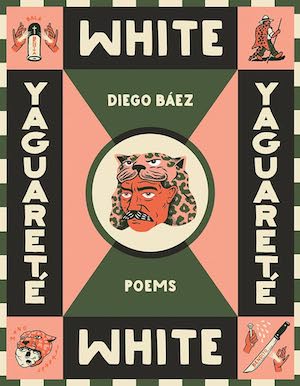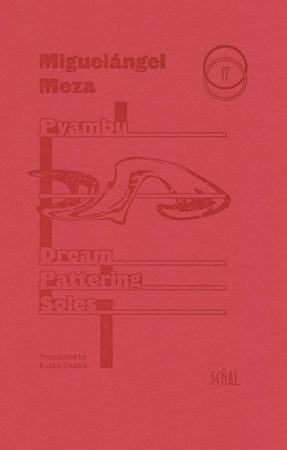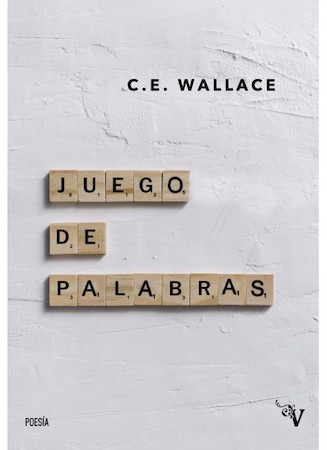Reading Lists
10 Books to Help You Understand Paraguay
Diego Báez, author of the poetry collection "Yaguareté White," recommends a literary journey through Paraguay

Latin American literature—translated into English, authored by members of diasporic communities, unpacked by scholars, or written by next generation children of immigrants—has never experienced such widespread, mainstream popularity.* More easily than ever, readers can encounter writers and artists from so many Latin American countries, including Mexico, Puerto Rico, the Dominican Republic, Cuba, Colombia, Argentina, El Salvador, Guatemala, Peru, Ecuador, Honduras, Venezuela, et alia.
A notable exception, if you grew up flying to Asunción (then driving to Villarrica) for a month every few years to visit your father’s family—as I did—is the tiny, landlocked nation of Paraguay. Frequently overlooked, Paraguay hasn’t caught the attention of its larger, more prosperous, or more popular neighbors. And yet, the demographic maths suggest that the country isn’t underrepresented, with only a tiny percentage of the 63 million Latine inhabitants of the U.S. claiming Paraguayan heritage. But it still stings to find my people absent from anthologies, missing from print media, and all but omitted from the canon altogether.
In my own way, I hope to help elevate Paraguay’s status within literatures of the Americas. My debut book of poetry, Yaguareté White, explores themes of identity, heritage, history, and legacy, and it’s my hope that other Paraguayan Americans will recognize themselves in my poems.
Of course, it’s important to acknowledge the many writers, scholars, and artists who have already figured Paraguay into literature before me. To that end, I share ten books to embark on a literary journey through Paraguay.
*For what it’s worth, I regard the United States as part of “Latin America,” due to its overlapping legacies of colonialism, undeniable cultural influence over, record of political interference in, and increasingly similar demographic makeup to countries traditionally considered “Latin” throughout the Caribbean, North, South, and Central Americas.
Yo El Supremo by Augusto Roa Bastos, translated by Helen Lane
“Shouts and peals of laughter, cheers and hurrahs for El Supremo! The crowd grows more and more excited. Leaps and cavorts round the immense candle, which has done its humble best to bow its head to the multitude in this unprecedented celebration. The women writhe frenetically in the red dust of the plaza. The more ecstatic of the vatic Bacchae fling themselves upon the softened tip. Their hair stands on end. Tunics rent to pieces, eyes bulging from their sockets. They scrape off bits of hot wax. Gather the burning-hot drops in the hollow of their hands. Rub their bellies, their breasts, their mouths with chunks of warm wax. Howl in mad maenadic rapture:
Oé…oé…yekó raka’é
ñande Karai-Guasú o nacé vaekué…“
Inarguably the foremost work of fiction produced by a Paraguayan writer, this doorstop of a novel is a fictionalized account of the rule of José Gaspar Rodríguez de Francia, the first dictator of Paraguay (officially, “Supreme and Perpetual Dictator of Paraguay”), installed shortly after national liberation in 1811. Defined by human rights abuses, a paranoid police state, and threats and implementations of violence against citizens, Francia’s rule nevertheless preserved Paraguayan independence, upended the Casta system imposed by Spain, and kept the needle of Paraguay’s national compass pointed ostensibly in the direction of progress.
Published in 1974, during the reign of murderous dictator, Nazi sympathizer and child rapist Alfredo Stroessner, Yo el Supremo triggered Paraguay’s censors, who were especially sensitive to anything that could be construed as critical of the Stronato regime and its “infallible” leader. Subsequently banished from his country, Roa Bastos waited out Stroessner’s rule, only to return upon the despicable despot’s downfall in 1989.
Yo el Supremo stands alone among Paraguayan literature as a virtuosic interrogation into unchecked ambition, absurd megalomania, and the collective psyche of a country that continues to wrestle with memories of unquestioned complicity and the ongoing pursuit of independence.
Dream Pattering Soles by Miguelángel Meza, translated into Spanish by Carlos Villagra Marsal, Jacobo Ruskin, and the author; translated into English by Elisa Taber
“Mainumby,
fleck of forest
fluttering vertiginously by opening buds,
wearing out ornaments:
you originate afar in time.
Your long sipping beak
pierces
the forest,
and traversing the wind
you seal my sighs.”
Paraguayan poetry has only recently begun to emerge on the U.S. literary scene, most recently via an illuminating feature at Words Without Borders and this unprecedented, trilingual chapbook, which preserves the consonantal forests and firecracker diacritics of Paraguay’s native Guaraní, an indigenous language that serves as an official tongue of the country, together with Spanish.
In English translation, Meza’s lyrics range from mortal and mournful lamentations (“Lost my grandfather. My mother. My father. My flesh.”), to piercing depictions of petrified, anthropomorphized nature (“Water’s breath foams and hardens. […] Water’s breath is hard and sharp.”), to inextricable tangles of nature, technology, and humans’ built environment: “Palm wall / sifts moon’s wild honey.” The result is a stirring snapshot of poetry that lives inside and beyond the borders of country, culture, and language.
Besides his decades-long career as a poet and cultural promoter, Meza is the founder of Mburukujarami Kartonéra, a cartonera press, which recycles cardboard to construct handcrafted chapbooks and broadsides. With luck, we’ll see more of Meza’s poems translated into English, as well as that of his fellow countrypeople.
An Archipelago in a Landlocked Country by Elisa Taber
“I was conceived in Neuland in 1990. I do not remember the bush Frieda planted when I was conceived, or the peach tinged roses I received when I was born. I remember Dolores Ayerza’s Reserva Campo Alegre, my mother’s painting. The baby in the forefront and the title scrawled at the bottom. He is limp but rigid in his mother’s arms. Her lips and nose are swollen but severe. In the background there is a man with mouth agape, a squalid dog, and a wooden chair. When I was older, I was told the baby was dead. In January 2013, I returned to Neiland on my own. I lived with Frida Müller for three months. She is a self-described Mennonite and Chaqueña. In July 2016, my mother and I return together to Frieda’s unoccupied home for a month.”
Described as a “lyric ethnography,” this hybrid text blends observation, ekphrasis, fiction, and myth to portray populations of Paraguayans residing in decidedly different environments: a settlement of Nivaklé, native people of the Chaco; and a Mennonite colony.
The book’s three sections are not designed to be read sequentially. Instead, writer, translator, and anthropologist Taber invites readers to jump between vivid descriptions of short films shot in Paraguay, a collection of short stories that take inspiration from Nivaklé folklore, and a novella that embellishes the life of a Mennonite woman.
Taber’s intimate, experimental treatment of such disparate topics yields a fascinating kind of hypertext, one that must be navigated in way that perhaps recreates the disjointed experiences shared by many people of Paraguayan descent, as we seek to make sense of our cultural, linguistic, and national heritages.
In addition to her own writings, Taber has translated work by a number of Paraguayan writers, including Miguelángel Meza (noted above) and Damián Cabrera, and she advocates for greater recognition of indigenous peoples across South America, such as the Mapuche.
Juego de Palabras by C.E. Wallace
“qzuiás
la
vdia
no
speimre
tneie
sneitdo”
One of the first Paraguayan-born writers currently residing in the U.S. to publish a book of poetry, Wallace’s lyrics are playful and flirtatious, as they explore the vocales and consonantes of español.
The title of Wallace’s debut translates literally to “game of words,” but it can be understood also to mean “puns,” as the poems riff on everything from monstruos and rostros, to ñanduti (traditional Paraguayan lacework) and rohayhu, the Guaraní word for, “I love you.” My favorite entries include those for búho (“owl”) and fases (“phases”), as they assume the shapes of gentle crescents wedged neatly on the page.
Available in Spanish from Valparaíso Ediciones, Wallace’s work will no doubt appear in English translation sooner rather than later, as the author continues to emerge as an important voice in U.S. poetics.
Don’t Cry: The Enlhet History of the Chaco War by Hannes Kalisch and Ernesto Unruh, translated by Nicholas Regan
“I was with my grandfather when we met some valay, some Paraguayan soldiers that were on their way back from fighting against the yaamvalay, the Bolivians. They stopped in the lengko—the Mennonite’s—village. There they saw my grandfather. They called him a Bolivian and then they murdered him.”
For three years, from 1932 to 1935, Paraguay engaged in a bloody war with neighboring Bolivia over the vast, semi-arid plains that comprise the Gran Chaco, thought to be rich in oil. (It is not.) Called the Chaco War, or the War of Thirst, the conflict is now widely recognized as a proxy war between Royal Dutch Shell (Paraguay) and Standard Oil (Bolivia), one that resulted in the deaths of anywhere from 80,000 – 150,000 combatants. In the end, Paraguay won a majority of the disputed land, which turned out to be bereft of any oil, minerals, or natural resources other than timber, most of it situated deep on the periphery.
The Chaco War also upended the lives of many indigenous peoples caught in the crossfire, including the Enlhet (sometimes conflated with the Enxet into one group, the Lengua), who had resisted colonization well into the 20th century, until the Mennonites arrived with proselytism and smallpox in 1927. Due to the Chaco’s remote geography, linguistic differences, and scholarly disinterest in the region until recently, Enlhet perspectives have remained largely silenced. This book salvages their untold stories to share with the wider world.
Divided into four parts, Don’t Cry offers a brief history of the Chaco War, recounts witness testimonies by Enlhet victims, contextualizes the firsthand accounts with additional materials, and suggests paths for progress that center the lives and experiences of the Enlhet people.
It’s a novel approach to storytelling, an engaging and heartbreaking history from below. I highly recommend Don’t Cry for anyone interested in learning about Paraguay from one sampling of its often overlooked native communities.
Disrupting the Patrón: Indigenous Land Rights and the Fight for Environmental Justice in Paraguay’s Chaco by Joel E. Correia
“Environmental racism predicated on histories of land dispossession and resource control has long threatened Indigenous and Afro-descendant well-being across [Latin America]. From early colonization to the present, land, water, and resource grabs undermine preexisting social-environmental relations. […] Thus, in thinking with recent provocations to decolonize environmental justice studies, this book attends to place-based struggles of Enxet and Sanapaná peoples while centering my interlocutors’ theorizations of justice and visions for the future. In so doing, I seek to advance a notion of environmental justice otherwise, enriched by hemispheric conversations about Indigenous politics in the Americas but always sensitive to the lived experience of land struggles in Paraguay’s Bajo Chaco.”
A bit dense, sure. But Correia’s intervention intersects at the bleeding edge of environmental justice and racial geography, two fields with a great deal to offer theorists in academia and activists on the ground in equal measure. Like Don’t Cry, Correia prioritizes the perspectives of native peoples in the legal and extralegal battles the Enxet and Sanapaná wage in order to not only return land back to its aboriginal inhabitants, but also to restore their collective and individual agencies. As an academic ethnography, Disrupting the Patrón is admittedly designed for a narrower audience than many titles on this list. But the book is available to read as an open access text, which is surely the modality of the future for academic publishing, if anyone besides eggheads and pencil-necks (Yours Truly included) will ever read it.
Colonial Kinship: Guaraní, Spaniards, and Africans in Paraguay by Shawn Michael Austin
“While African languages may have predominated on the Jesuits’ haciendas and ranches, Africans throughout the rest of Paraguay quickly adopted the Guaraní language. Many blacks who appeared in litigation proceedings could only speak the Guaraní language. […] While the population of Africans in Paraguay was modest compared to other regions, it was substantial, especially in Asunción. Further research will surely reveal the myriad manifestations of African cultural influence on Paraguayan colonial and postcolonial society.”
The topic of African influence in Paraguay is an especially difficult one to confront, since the devastating legacies of slavery and racism underscore every conversation. Long regarded as isolated populations within the city of Emboscada (meaning “ambush,” so named for frequent skirmishes between native Guaicurú and Carios tribes) and villages like Kamba Cuá (outside Asunción) and Kamba Kokué (outside Paraguarí), Afro-Paraguayans deserve more recognition, attention, and respect than has been traditionally accorded for their contributions to the country’s history and culture. Historian Austin’s close look at colonial relations between and among native peoples, enslaved Africans, and colonizing Spaniards also problematizes preconceived notions of kinship relations and their impacts on the colonial apparatuses of early Paraguay.
Forgotten Fatherland: The True Story of Nietzsche’s Sister and Her Lost Aryan Colony by Ben MacIntyre
“Elizabeth Nietzsche was not just bigoted, ambitious and bloody-minded (although she was all of these things and more), she was also a woman of extraordinary courage, character and (she would have been gratifyingly annoyed by the word) chutzpah. Through sheer willpower she founded one New Germany in the middle of Paraguay and then helped to found another, half a century later, in the shape of the Third Reich. She was awful, in both senses of the word.”
MacIntyre’s riveting, unsettling account of the founding of Nueva Germania follows Elisabeth Förster-Nietzsche (sister of the [in]famous philosopher Friedrich) and her husband, the anti-semite teacher Bernhard Förster, as they establish, and quickly abandon, the colony in 1888. Convinced of their naturally superior Aryan blood, the Germans arrived unprepared and quickly succumbed to the harsh landscape due to a lack of supplies, deteriorating morale, and brutal disease.
But MacIntryre’s chronicle doesn’t end with Elisabeth’s departure in 1893. Instead, the book details further developments among the languishing colonists, including the circulation of Nazi propaganda in the 1930s, the eventual arrival of Nazi war criminals (including Joseph Mengele) in the 1940s and ‘50s, and the threadbare legacy of lingering descendants until the date of publication (1992). Bolstered by photographs spanning the 1880s to the 1990s, comprehensive notes, and copious suggestions for further reading, this entry narrates a crucially important, if often forgotten, element of Paraguay’s complicated history.
Paraguayan Sea by Wilson Bueno, translated by Erín Moure
“And now I’d like to tell you just one big hairy secret: all my energy goes into pulling myself up by the bootstraps and into the immense armies of ants, all those sounds silencieux murmured by ants, the harmless insectes that are Guaraní as it rises in me, ant-like, tahiĩ, tahiĩguaicurú, araririi, aracutí, pucú. Ants of divinity blazing up in this dusk of verbs and nouns, in my tangle-web webtangle—capable in me, blessed lady, of deciding, with sudden verdict, my fate here among all you antediluvian beings.”
“Brilliant” is too understated an adjective to describe Brazilian writer Bueno’s audacious, shape-shifting celebration of fluidity in many forms. Called a “poetic seduction,” a “polylingual monologue,” and a “homage to life, to being embodied, to border crossing,” Paraguayan Sea can best be described as a book-length prose poem, composed in Portunhol (a combination of Portuguese and Spanish) and Guaraní that explodes conventions of language, gender, and narrative.
So far as Mar Paraguayo concerns a plot: its narrator has loved an older man and a younger man, alternating masculine and feminine pronouns, as they navigate a Brazilian beach town. The loose narrative structure drapes itself over Bueno’s dazzling lexical range and dynamic lyrical phrasings, as the text sings its otherness electric.
Erín Moure’s dextrous, freewheeling translation retains the wonderfully discombobulating shifts in language and outbursts of Guaraní, even as it constructs a totally new text in “Frenglish” (English punctured by French). The slim volume also includes an “elucidictionary” of Guaraní terms, a “mixelated Portunholçaisupí postface” by Chilean poet and essayist Andrés Ajens, an etymological incantation by contemporary Paraguayan poet Christian Kent, a revealing interview with Wilison Bueno, and a fascinating essay by Moure herself.
Absolutely read this book. It won’t teach you much about Paraguay, per se. But perhaps, through its acrobatic dance of language and culture-bending, it might.
Zama by Antonio di Benedetto
“A dead monkey, still whole, still undecomposed, drifted back and forth with a certain precision upon those ripples and eddies without exit. All his life the water at forest’s edge had beckoned him to a journey, a journey he did not take until he was no longer a monkey but only a monkey’s corpse. The water that bore him up tried to bear him away, but he was caught among the posts of the decrepit wharf and there he was, ready to go and not going. And there we were.
There we were: Ready to go and not going.”
Published in 1956, Argentine writer Di Benedetto’s rediscovered classic unfolds in three installments during the 1790s, a strange era in Paraguay: the native Guaraní had warred with neighboring Inca for centuries; by 1556, Spanish conquistadors had enslaved native peoples via the encomienda system; enterprising Jesuits hungry for souls had arrived in the 1580s and established a network of missions called reducciones, but were rebuked and expelled by the Spanish Crown by 1767; with national independence yet another decade away. Such incursions, upheavals, and abandonments are emblematic of Paraguay’s tumultuous history.
Di Benedetto’s stirring, discomfiting story centers around Don Diego de Zama, a high-ranking official of Spain, relegated to a remote outpost in Asunción, the capital city of frontier Paraguay. As Zama’s backwater tenure drags on, his hopes for reassignment in desirable Buenos Aires diminish and his dwindling visions of eventual escape are subsumed by desperate resignation as the last decade of the 18th century concludes.
As translator Lane points out in her preface, the novel was translated into several languages and earned the author acclaim across the globe. But for all his recognition later in life, Di Benedetto’s name doesn’t appear once in 1,664 pages of Jorge Luis Borges’ correspondence, signaling an absence of serious consideration by renowned Argentine writers of the time. And yet, no less a talent than Roberto Bolaño appears to have modeled the title character in his short story “Sensini” after Di Benedetto’s Zama, cementing the latter author’s place as an influential figure in Latin American letters.
One of the first in a long line of Argentine writers who use Paraguay for their own ends, Di Benedetto didn’t actually visit Asunción until many years after the novel’s publication, complicating this book’s place in a pantheon of literature that purports to teach readers about a country the author inhabits only by proximity. Nevertheless, Di Benedetto’s sparse depictions and acute sense of frustration faithfully conjure a unique historical moment.











